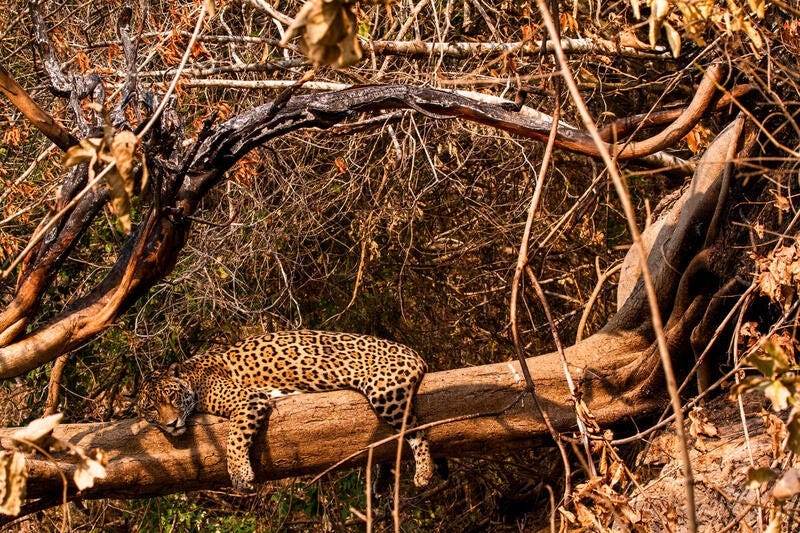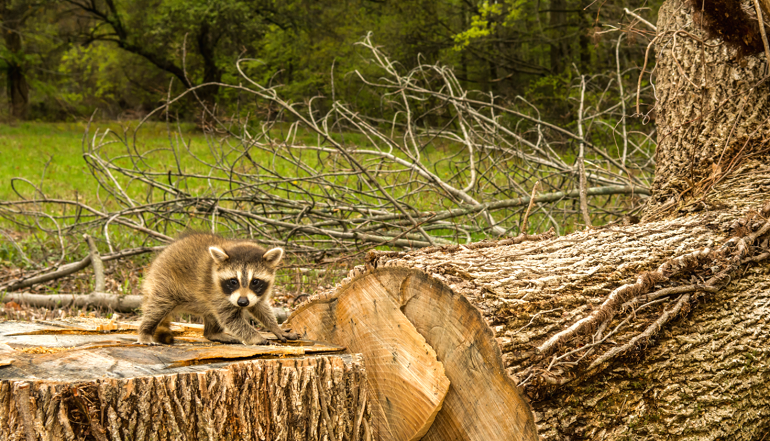The Impact of Deforestation on Animal Populations
 Deforestation, the large-scale removal of forest cover, is a significant environmental issue with far-reaching consequences for biodiversity.
Deforestation, the large-scale removal of forest cover, is a significant environmental issue with far-reaching consequences for biodiversity.
Forests provide essential habitats for countless species, and their destruction disrupts ecosystems, leading to declines in animal populations.
This article explores the multifaceted impacts of deforestation on wildlife, highlighting the urgent need for sustainable practices and conservation efforts.
Habitat Loss and Fragmentation
One of the most immediate and devastating effects of deforestation is habitat loss. Forests are home to approximately 80% of the world's terrestrial biodiversity, providing shelter, food, and breeding grounds for a vast array of species.
When these forests are cleared, often for agriculture, urban development, or logging, the habitats that animals rely on are destroyed, leading to population declines and, in some cases, extinction.
Loss of Home and Food Sources
The removal of trees and vegetation eliminates the primary habitat for many species. For example, arboreal animals such as monkeys, sloths, and numerous bird species depend on trees for nesting and foraging.
When these trees are felled, these animals lose both their homes and food sources, forcing them into less suitable habitats or leading to starvation.
Fragmentation and Its Consequences
Deforestation often results in fragmented landscapes, where patches of forest are isolated from each other by agricultural fields, roads, or urban areas.
This fragmentation can be just as harmful as outright deforestation, as it restricts the movement of animals and isolates populations.
Fragmented habitats can lead to inbreeding, reduced genetic diversity, and a decreased ability to adapt to environmental changes, all of which can threaten the survival of species.
Disruption of Ecological Networks
Forests are complex ecosystems where species interact in intricate food webs and mutualistic relationships.
Deforestation disrupts these networks, leading to cascading effects that can impact entire ecosystems.
Predator-Prey Dynamics
 The removal of forest cover can alter predator-prey dynamics. For instance, deforestation can reduce the availability of cover for prey species, making them more vulnerable to predators.
The removal of forest cover can alter predator-prey dynamics. For instance, deforestation can reduce the availability of cover for prey species, making them more vulnerable to predators.
Conversely, the loss of habitat can reduce the populations of predator species, allowing prey populations to increase unchecked, which can lead to overgrazing and further environmental degradation.
Pollination and Seed Dispersal
Many plant species rely on animals for pollination and seed dispersal. Birds, bats, and insects are key pollinators, while mammals and birds often act as seed dispersers.
Deforestation disrupts these services, threatening the reproductive success of many plant species and leading to a decline in forest regeneration.
This loss of plant biodiversity can have further knock-on effects on the animal species that depend on these plants for food and shelter.
Climate Change and Environmental Stress
Forests play a crucial role in regulating the global climate by absorbing carbon dioxide and releasing oxygen.
The loss of forests not only contributes to increased atmospheric carbon dioxide levels, exacerbating climate change, but also leads to altered local climates, which can have severe implications for wildlife.
Altered Microclimates
Forests create specific microclimates that many species depend on. The removal of forest cover can lead to increased temperatures, reduced humidity, and altered rainfall patterns.
These changes can make habitats unsuitable for species adapted to specific climate conditions, forcing them to migrate, adapt, or face extinction.
Increased Vulnerability to Natural Disasters
Deforestation increases the likelihood of natural disasters such as floods and landslides. Forests stabilize the soil and help to regulate water cycles, preventing soil erosion and mitigating the impact of heavy rainfall.
Without forest cover, the landscape becomes more prone to erosion and runoff, which can destroy habitats and make survival difficult for terrestrial and aquatic species alike.
Conservation Strategies and Sustainable Practices
Addressing the impact of deforestation on animal populations requires a multifaceted approach that includes conservation strategies, sustainable land management practices, and global cooperation.
Protected Areas and Wildlife Corridors
Establishing protected areas is one of the most effective ways to conserve biodiversity. These areas provide safe havens for wildlife, where human activities are restricted or managed to minimize impact.
Additionally, creating wildlife corridors—strips of natural habitat that connect isolated patches of forest—can help maintain genetic diversity and allow species to migrate in response to environmental changes.
Sustainable Forestry and Land Use
Promoting sustainable forestry practices, such as selective logging and reduced-impact logging, can help mitigate the effects of deforestation.
These practices aim to minimize damage to the forest ecosystem and maintain habitat for wildlife.
Moreover, agroforestry—integrating trees into agricultural landscapes—can provide economic benefits while preserving biodiversity and ecosystem services.
Community Engagement and Education
Engaging local communities in conservation efforts is crucial for the success of any strategy. Education and awareness programs can help communities understand the importance of forests and the services they provide.
Empowering communities to manage their natural resources sustainably can lead to better conservation outcomes and enhance local livelihoods.
International Cooperation and Policy
Global cooperation is essential to address deforestation, as it is a transboundary issue. International agreements, such as the United Nations' REDD+ (Reducing Emissions from
Deforestation and Forest Degradation) program, aim to incentivize countries to preserve their forests by providing financial compensation.
Strengthening and enforcing such policies can significantly reduce deforestation rates and protect biodiversity.
Conclusion
The impact of deforestation on animal populations is profound and multifaceted, affecting not only the survival of species but also the health of ecosystems and the planet's climate.
Immediate and concerted action is needed to mitigate these effects, protect biodiversity, and ensure the sustainability of our natural resources.
Conservation efforts, sustainable practices, and international cooperation are crucial components of the solution. By raising awareness and promoting responsible land use, we can work towards a future where forests and their inhabitants are preserved and protected for generations to come.
References
- Food and Agriculture Organization of the United Nations (FAO). (2020). Global Forest Resources Assessment 2020. FAO
- Global Forest Watch. (2021). Forest Monitoring, Land Use & Deforestation Trends. Global Forest Watch
- National Geographic Society. (2021). Deforestation Explained. National Geographic



































